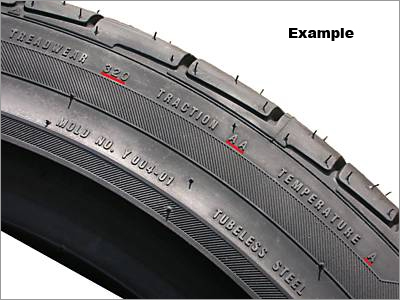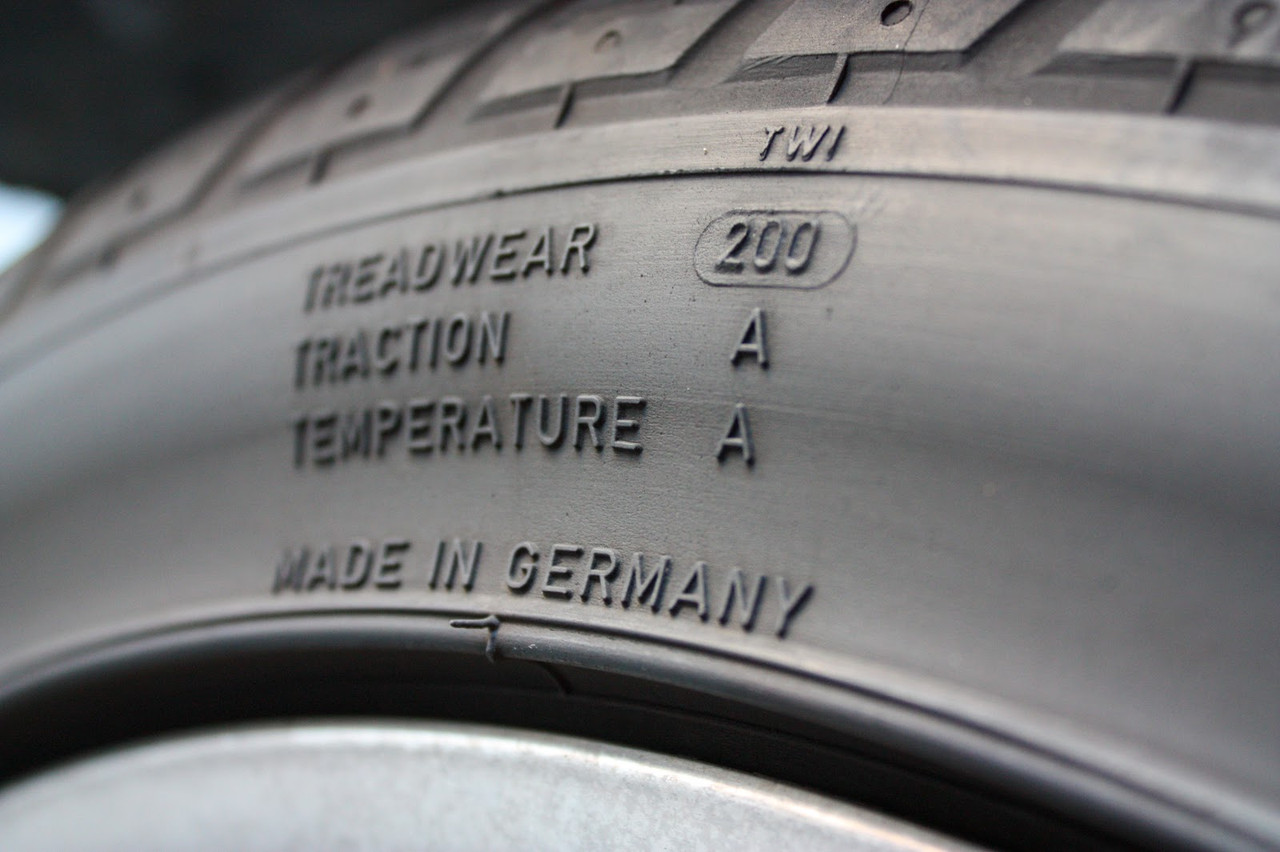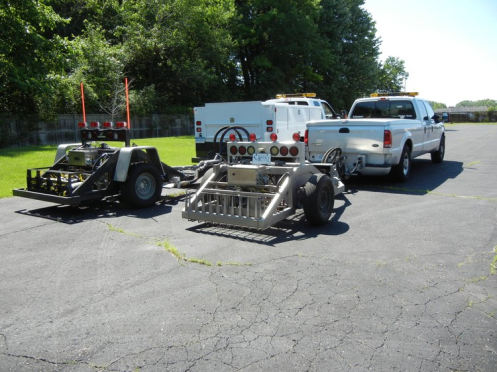
|
B
arry's
Tire
Tech This is a series of articles on the technical aspects of tires, their care and usage. My primary purpose in these articles is to help people understand tires and thereby reduce the risks we all face every day. ..........and since tires is just about the only thing I know about.......... Please drop me a note if you have a topic you want to see: Barry@BarrysTireTech.com |
|
Uniform Tire Quality Grading (UTQG) Ratings: What you should get from this page:
|
|
UTQG ratings were a long time in gestation. The tire manufacturers resisted the regulation quite strongly. Their principal argument was that the ratings were highly variable and would be misleading to the public. The regulators argued that even with the variability, the ratings were needed to aid the public to make informed choices. The regulators won and in 1978, the regulation was issued. The ratings are required to be stamped on the upper sidewall. Below I discuss each test, sometimes referencing different pages where I go into more detail. |

|

|
Tread Wear Rating Test: I go into much detail about the UTQG Treadwear test (and other related things) here:
Barry's Tire Tech: Tire Wear - Normal The only thing I should add is that the rating is in increments of 20 - meaning that the second lowest rating would be 20 (Zero being the lowest). Also, some racing series requires DOT rated tires, and some of those tires will have extremely low ratings (such as 20). Needless to say, there isn't any need to actually conduct a treadwear test if the rating is going to be that low! |
|
Traction Rating Test:
|
|
|
Temperature Rating Test: This is a misnomer in that it doesn't grade tires on their resistance to heat. It grades tires on speed capability, much like a Speed Rating.
Many people feel this test should be eliminated in favor of requiring a Speed Rating. |
|
What I find interesting about this is that many folks claim that the A rating is OVER 115. Nope!! The test ends at the 115 mph step. That's not OVER! Also, many folks say the C grade is 85 mph to 100 mph. Nope, the test starts at 75 mph (121 kph) and anything that doesn't complete the 100 mph (151 kph) step is given a C grade. Plus, there is a DOT requirement that the tire has to pass a High Speed Test, where the ending speed is 99 mph (160 kph). The tests are similar, but different enough that I can't tell how the 2 tests compare. What I can tell is that there are some C Grade tires. |
|
Compliance Testing: None of the above testing is conducted by the government. It's called "Self Certification." But that doesn't mean the testing is conducted by the tire manufacturer. It could be done by a third party that is hired by the tire manufacturer - and this is common for both the treadwear test and the traction test.
Further, not every size in a tire line is tested - only a representative sample. This is true for both the treadwear test and the traction test. This is not true for the temperature test. The treadwear test is expensive and if you can test a lot of tires at the same time (which means only a single control tire), then the cost is lower. This happens a lot. |

|

|
And since there is only one traction testing surface, it is also common for the traction test to be done by a third party, with a similar reduction in cost due to multiple tires being tested at the same time, but only one control tire. In order to assure compliance, NHTSA can request supporting documents from the tire manufacturer. Because of the way this works, testing could have been done on a similar tire in, perhaps, a different size, and the data presented doesn't include the actual tire being investigated. But does NHTSA conduct testing on its own? Yes!! Obviously the treadwear test is fairly expensive, so I don't think NHTSA does any of that - BUT - I am aware that NHTSA has conducted some traction testing. |
|
The Future: There is some talk about changing the UTQG system: Overall: Some are advocating no longer requiring the ratings be stamped on the sidewall of the tire. Instead, they advocate requiring the rating be published in brochures and other advertising literature. I don't think that is going to happen. Treadwear Rating: I do not know of any proposed changes. Traction Rating: Changing the test so the peak value, rather than the locked wheel, sliding value is used. This would better reflect ABS system braking. I suspect this will require a correlation study, This could be a complication, but I expect this to happen. Temperature Rating: The proposal is to eliminate the rating and replace it with the Service Description, which includes both the Load Index and Speed Rating. Because this smacks of European influence, I expect a fight, but in the end I expect this rating to be replaced by: Rolling Resistance Rating: Grading RR was proposed before, but the proposal was withdrawn in 2010 because of the tire industry opposing the criteria for the rating. Note: They didn't object to having a rating, just the way it was done. This will be back because California is proposing a system, and the Feds can't let any state preempt their authority. Replacing the Temperature Rating would be a good compromise to removing the grading from the sidewall. There will be a lot of pressure towards the rating system being identical to the EU system. This fight should be interesting! |

|
|
Update Oct, 2023: I found a database that has the UTQG ratings for a lot of tires.
|
|
Barry's Tire Tech - Main Page |